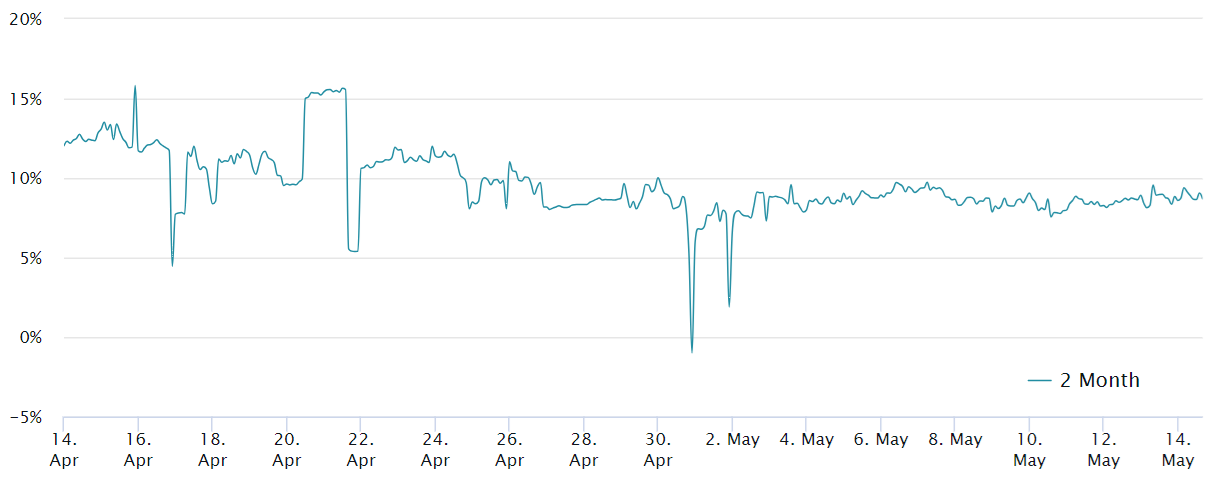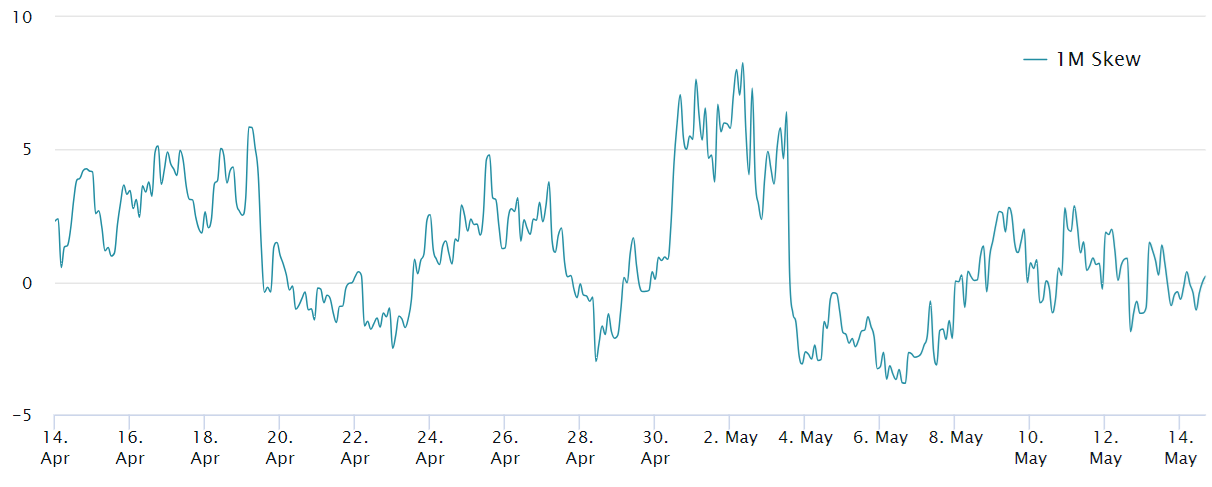
Bitcoin (BTC) fell 3.3% on May 14, retesting the $61,000 support level, which was quickly defended. More importantly, this correction represents the second failed attempt within a week to exceed $63,500. Despite the sub-optimal price action, Bitcoin bulls remain confident, as shown by Bitcoin derivatives metrics.
Although the current Bitcoin price trend looks bearish, some analysts believe that it still has a good chance of reconsidering prices above $70,000.
The Cryptotoad trader and analyst was impressed by how long the $60,500 support level held. However, he stresses that a higher rise is needed, likely a daily close above $67,000, to break the current bearish pattern. While this analysis does not rule out a potential price recovery, it clearly indicates that the trend points to prices below $57,000 in May.
US inflation data is putting short-term pressure on the price of Bitcoin
Investors’ disappointment on May 14 was partly due to US Producer Price Index data for April, which showed a 0.5% increase month-on-month. The market interpreted wholesale inflationary pressures as confirmation that the US Federal Reserve (Fed) would keep interest rates high for longer, hurting risk on assets such as cryptocurrencies and growth stocks.
Some argue that inflation is inherently positive for Bitcoin’s performance due to its tight monetary policy. However, during the initial stages of fear and uncertainty, investors tend to look for cash and short-term bonds. Yields on two-year US Treasuries fell to 4.84% on May 14 from 5.03% on May 1, suggesting that traders are paying a higher price for these fixed-income instruments.
It may seem counterintuitive to seek recession protection in U.S. Treasury bonds, but these assets are considered the safest because they are directly backed by the government, unlike money market funds managed by financial institutions. Therefore, while higher-than-expected inflation data should have sparked negative sentiment towards Bitcoin, this was not reflected in the derivatives data.
Bitcoin derivatives show resilience despite lackluster Bitcoin price action
To analyze whether professional traders have become more pessimistic about Bitcoin after its drop to $61,000, one should examine the monthly Bitcoin futures contracts. In neutral markets, these contracts typically trade at a premium of 5% to 10% compared to spot markets for Bitcoin to account for the longer settlement period.

The data suggests that Bitcoin’s annual futures premium has been largely unaffected by deteriorating macroeconomic conditions and Bitcoin’s repeated failure to maintain prices above $63,500 over the past week. The current premium of 8% stands in the middle of the neutral market, leaving a good margin for downside surprises.
Related: Bitcoin’s hash rate dropped due to miners shutting down unprofitable ASIC machines after the halving
One should continue by examining the Bitcoin options market to determine whether demand for hedges has increased following the recent price correction. Typically, if market makers and whales expect a decline in the price of Bitcoin, the Bitcoin options skewness measure will exceed 7%, while periods of enthusiasm often show a skewness of less than -7%.

BTC options with a delta skew of 25% have remained in a neutral range since May 8, meaning that market participants have priced put (buy) and put (sell) instruments similarly. By this measure, Bitcoin’s price weakness has not affected how these professional traders assess downside volatility risks.
Bitcoin bulls got what they wanted with a show of strength, with the last daily close above $65,000 occurring three weeks ago, on April 23. However, the bulls do not seem to be affected by the lack of momentum, which seems to be driven mostly by a temporary shift of investors. Towards critical attitudes. If the inflationary problem persists in the US, market participants may have to look for alternatives, so Bitcoin’s path to $70,000 for 2024 remains in play.
This article does not contain investment advice or recommendations. Every investment and trading move involves risk, and readers should conduct their own research when making a decision.